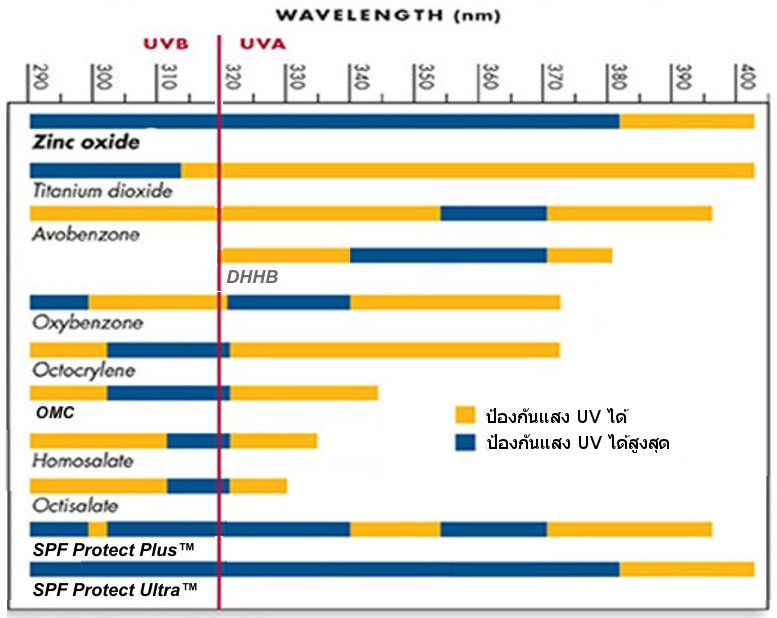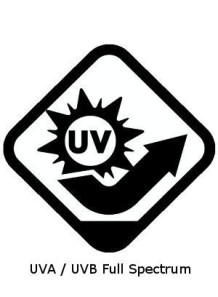Zinc Oxide (20nm, Triethoxycaprylylsilane Coated)
- Product Code: 35675
Zinc Oxide Nano type is Zinc Oxide powder that has been coated with Triethoxycaprylylsilane Suitable for most sun protection formulas. Compared to other types of Zinc Oxide
Size 20nm does not cause white stains on the skin.
- -
- -
- -
- -
- -
- -
- -
- -
- -
- -
- -
- -
- -
- -
- -
- -
- -
- -
| Test Name | Specification |
|---|---|
| Appearance | White powder |
| Whiteness | 85% Min |
| Zinc Oxide Content | 93% Min |
| Surface Property | Hydrophobic |
| Apparent Density | 0.4g/cm3 Max |
| Loss on drying | 2% Max |
| Primary particle size, average | 20nm |
| Heavy metals: Pb | 10ppm Max |
| Heavy metals: Hg | 1ppm Max |
| Heavy metals: As | 2ppm Max |
| Heavy metals: Cd | 5ppm Max |
| Total aerobic plate count | 500CFU/g Max |
| Total yeast and mold | 100CFU/g Max |
| Pathogens | Not detected |
Zinc Oxide Zinc Oxide Nano type is Zinc Oxide powder that has been coated with Triethoxycaprylylsilane To be able to disperse easily and completely in silicone. For use as Physical Sunscreen and can be spread easily in powder. or oil For making makeup such as Mineral Makeup, Foundation Powder, Lipstick
The Nano type is different from the normal Zinc Oxide type in that it is easily and completely dispersed so that the Zinc Oxide particles are distributed in the formula. Does not settle even though it is in a liquid sunscreen formula. Complete distribution provides effective UVA/UVB protection.
Nano type is different from Zinc Oxide 200nm EasyDisperse in that the particle size is smaller than 200nm, causing less whiteness. Especially suitable for sunscreen formulas.
Advantages of Physical Sunscreen: Less likely to clog pores than Chemical Sun Screen and is safer than Chemical Sun Screen because there are no ingredients that can be absorbed into the skin. Physical Sun Screen just covers the skin and protects it from UVA/UVB. Can hit the skin directly.
Disadvantages of Physical Sunscreen: Because it is a powder that conceals the skin, it does not allow UVA/UVB light to fall on the skin easily. Therefore, it often makes the skin shinier or shinier when used. The small particle size (nano particle) helps reduce this shine/shiny, but it still cannot compete with Chemical Sun Screen which does not cause shine/shiny.
Difference Between Titanium Dioxide and Zinc Oxide: Both Ingredients It acts to protect against UV light in different wavelengths. Titanium Dioxide can protect against short-wave UVA and both short- and long-wavelength UVB, while Zinc Oxide can protect against long-wave UVA well. In mixing sunscreen formulas Therefore, both ingredients should be used. Because it can cover UVA/UVB at all wavelengths completely.

The company sells 4 types of Zinc Oxide.
1. Zinc Oxide 200nm EasyDisperse™, 200nm powder, silicone coated. Makes it easy to spread into any sunscreen formula. Gives a soft feeling on the skin, adheres well to the skin, and gives low whiteness.
2. Zinc Oxide Micronized powder type, uncoated, suitable for use in formulas with disinfectant effects such as deodorant formulas. Not suitable for use in sunscreen. that requires high dispersion to achieve good sun protection performance
3. Zinc Oxide 35nm Liquid, liquid type , with a powder particle size of 35 nanometers, ready to be mixed in any sunscreen formula, easy to use, feels soft on the skin, adheres well to the skin, does not cause whiteness on the skin.
4. Zinc Oxide Nano EasyDisperse™ Powder type smaller than 200nm, coated with silicone. Makes it easy to spread into any sunscreen formula. Gives a soft feeling on the skin, adheres well to the skin, and gives the lowest whiteness.
Recommendations for choosing to use in various products
Sun protection products who want to focus on sun protection efficiency And there is no need to cause whiteness on the skin. It is an emulsion in an oil-in-water system using Zinc Oxide Nano EasyDisperse™.
Sun protection products who want to focus on sun protection efficiency And does not have to cause whiteness on the skin by being an emulsion in a water-in-oil system using Zinc Oxide 35nm Liquid, liquid type.
Sun protection products who want to claim that it is non-nano Zinc Oxide, choose Zinc Oxide 200nm EasyDisperse™
Diaper rash products, deodorant or deodorant/odorant, or disinfectant, choose Zinc Oxide Micronized.
The company offers a free SPF measurement service in cases where PMMA Booster is used in the formula to help boost SPF/PA values.
Usage: For sun protection products who want to focus on UVA
Mixing method: Blend to disperse in oil or silicone.
Usage rate: 1-25%
Product appearance: White-light colored powder
Solubility: Can be dispersed in oil and silicone.
Storage: For long-term storage Store at room temperature. Do not expose to sunlight or heat. Seal the lid tightly. Shelf life is at least 36 months.
INCI Name : Zinc Oxide, Triethoxycaprylylsilane
Be the first to review this product :-)
Recommend Lab-Service
| Lab Service | Price |
|---|---|
| SPF UVA, UVB measurement service (Boots Star/PA eq.)
Measurement of SPF in finished product |
฿ 1800 |
Zinc Oxide Nano type is Zinc Oxide powder that has been coated with Triethoxycaprylylsilane Suitable for most sun protection formulas. Compared to other types of Zinc Oxide
Size 20nm does not cause white stains on the skin.
Zinc Oxide Zinc Oxide Nano type is Zinc Oxide powder that has been coated with Triethoxycaprylylsilane To be able to disperse easily and completely in silicone. For use as Physical Sunscreen and can be spread easily in powder. or oil For making makeup such as Mineral Makeup, Foundation Powder, Lipstick
The Nano type is different from the normal Zinc Oxide type in that it is easily and completely dispersed so that the Zinc Oxide particles are distributed in the formula. Does not settle even though it is in a liquid sunscreen formula. Complete distribution provides effective UVA/UVB protection.
Nano type is different from Zinc Oxide 200nm EasyDisperse in that the particle size is smaller than 200nm, causing less whiteness. Especially suitable for sunscreen formulas.
Advantages of Physical Sunscreen: Less likely to clog pores than Chemical Sun Screen and is safer than Chemical Sun Screen because there are no ingredients that can be absorbed into the skin. Physical Sun Screen just covers the skin and protects it from UVA/UVB. Can hit the skin directly.
Disadvantages of Physical Sunscreen: Because it is a powder that conceals the skin, it does not allow UVA/UVB light to fall on the skin easily. Therefore, it often makes the skin shinier or shinier when used. The small particle size (nano particle) helps reduce this shine/shiny, but it still cannot compete with Chemical Sun Screen which does not cause shine/shiny.
Difference Between Titanium Dioxide and Zinc Oxide: Both Ingredients It acts to protect against UV light in different wavelengths. Titanium Dioxide can protect against short-wave UVA and both short- and long-wavelength UVB, while Zinc Oxide can protect against long-wave UVA well. In mixing sunscreen formulas Therefore, both ingredients should be used. Because it can cover UVA/UVB at all wavelengths completely.

The company sells 4 types of Zinc Oxide.
1. Zinc Oxide 200nm EasyDisperse™, 200nm powder, silicone coated. Makes it easy to spread into any sunscreen formula. Gives a soft feeling on the skin, adheres well to the skin, and gives low whiteness.
2. Zinc Oxide Micronized powder type, uncoated, suitable for use in formulas with disinfectant effects such as deodorant formulas. Not suitable for use in sunscreen. that requires high dispersion to achieve good sun protection performance
3. Zinc Oxide 35nm Liquid, liquid type , with a powder particle size of 35 nanometers, ready to be mixed in any sunscreen formula, easy to use, feels soft on the skin, adheres well to the skin, does not cause whiteness on the skin.
4. Zinc Oxide Nano EasyDisperse™ Powder type smaller than 200nm, coated with silicone. Makes it easy to spread into any sunscreen formula. Gives a soft feeling on the skin, adheres well to the skin, and gives the lowest whiteness.
Recommendations for choosing to use in various products
Sun protection products who want to focus on sun protection efficiency And there is no need to cause whiteness on the skin. It is an emulsion in an oil-in-water system using Zinc Oxide Nano EasyDisperse™.
Sun protection products who want to focus on sun protection efficiency And does not have to cause whiteness on the skin by being an emulsion in a water-in-oil system using Zinc Oxide 35nm Liquid, liquid type.
Sun protection products who want to claim that it is non-nano Zinc Oxide, choose Zinc Oxide 200nm EasyDisperse™
Diaper rash products, deodorant or deodorant/odorant, or disinfectant, choose Zinc Oxide Micronized.
The company offers a free SPF measurement service in cases where PMMA Booster is used in the formula to help boost SPF/PA values.
Usage: For sun protection products who want to focus on UVA
Mixing method: Blend to disperse in oil or silicone.
Usage rate: 1-25%
Product appearance: White-light colored powder
Solubility: Can be dispersed in oil and silicone.
Storage: For long-term storage Store at room temperature. Do not expose to sunlight or heat. Seal the lid tightly. Shelf life is at least 36 months.
INCI Name : Zinc Oxide, Triethoxycaprylylsilane
| Mechanism | - |
| Appearance | - |
| Longevity | - |
| Strength | - |
| Storage | - |
| Shelf Life | - |
| Allergen(s) | - |
| Dosage (Range) | - |
| Recommended Dosage | - |
| Dosage (Per Day) | - |
| Recommended Dosage (Per Day) | - |
| Mix Method | - |
| Heat Resistance | - |
| Stable in pH range | - |
| Solubility | - |
| Product Types | - |
| INCI | - |
Cart
No products



